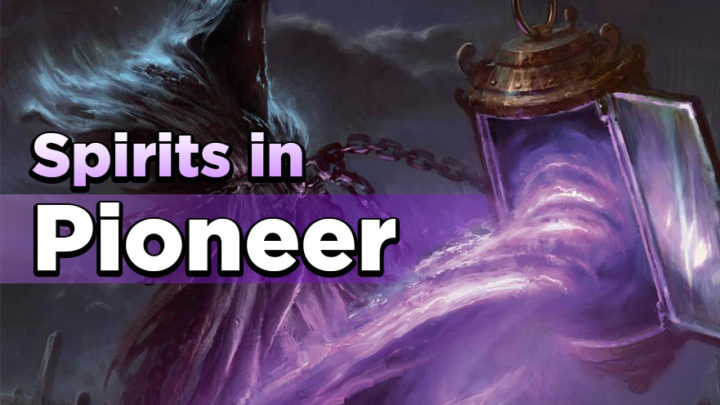Dimir Inverter has been the talk of the Pioneer community this past week. It was the breakout deck of last weekend’s Players Tour events, earning Piotr Glogowski a second-place finish in Brussels and putting five players into the Top 8 in Nagoya. But Inverter’s dominance all but overshadowed another deck that put up results on both continents: Spirits, the deck that won PT Nagoya in the hands of Kenta Harane.
Spirits is an easy deck to underestimate, but it’ll be among the decks to beat in Phoenix this coming weekend. Let’s go over how the deck works and how it matches up against the rest of the Pioneer metagame.
Why Play Spirits?
Tempo decks are my specialty, but even I was a bit leery of picking up Spirits at first. For one thing, experience has taught me that tempo strategies can’t succeed in every metagame. Decks like Spirits often fail to keep up with aggressive strategies – their reactive cards can force them into a defensive position, and their creatures can be too small and not mana-efficient enough to race. Fortunately for Spirits, the aggro decks in Pioneer haven’t had nearly as big a share of the metagame as the midrange and control decks that Spirits can easily prey on.
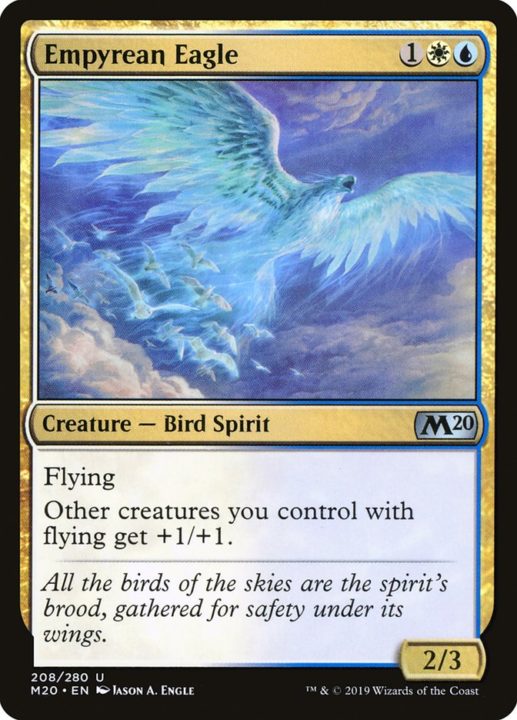
I also admit that Spirits doesn’t look like a very powerful deck on its face. One-mana 1/1’s and three-mana 2/3’s aren’t terribly exciting in a format full of some of the biggest creatures and best Planeswalkers ever printed. But like many tribal decks, Spirits runs like a well-oiled machine when all the pieces come together. Think of it like a Merfolk deck, except all your creatures have flying instead of Islandwalk. Your threats are evasive, and the goal is to deploy them as quickly as possible while disrupting your opponent.
With that, let’s introduce all the Spirits and talk about the roles they each play in the deck.
Meet the Spirits
The One-Drops
One-drop creatures typically aren’t the major players in tribal decks, but they keep the deck running consistently. Spirits decks tend to play two one-drops: Mausoleum Wanderer and Spectral Sailor.
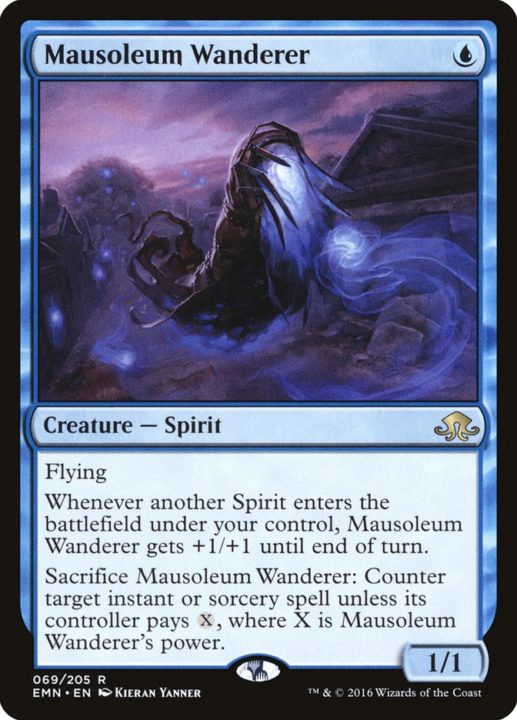
If we continue the Merfolk comparison, Mausoleum Wanderer is your Cursecatcher analogue. With the right support, Mausoleum Wanderer can deal decent chunks of damage, but it can also save a more important creature from a removal spell (such as a Spell Queller holding an exiled card or the Selfless Spirit you need to prevent a board-wipe).
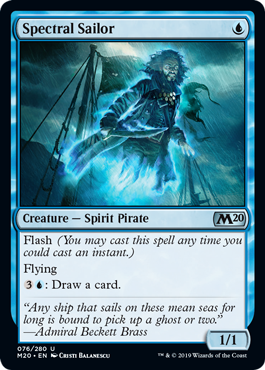
Spectral Sailor can’t grow as quickly as Mausoleum Wanderer, but it can net you an extra card or two if the game goes long enough. It also has flash, so it plays nicely with Nebelgast Herald.
The Lords
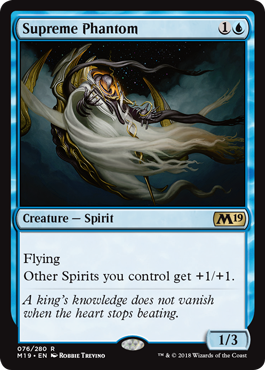
Every tribal deck needs “lords”: creatures that boost the power and toughness of creatures of a certain type. Your Spirits will look a lot more menacing when you have Supreme Phantom or Empyrean Eagle in play. Notably, Empyrean Eagle’s stat boost covers all flying creatures, not just Spirits, so it can make your Brazen Borrower a 4/2.
Spell Queller
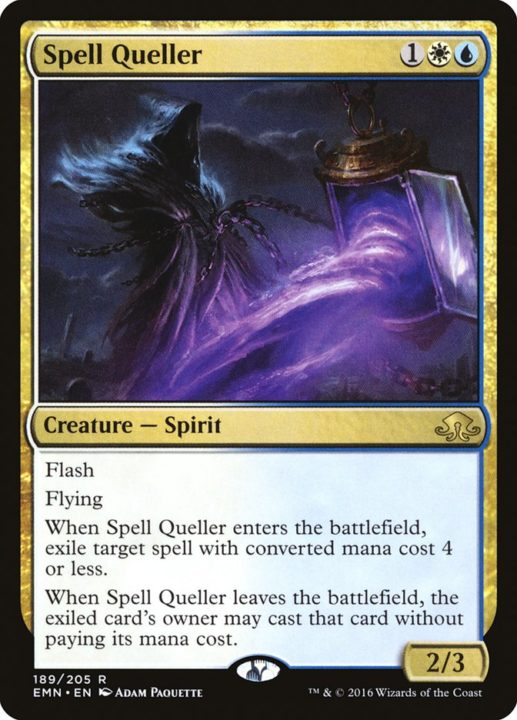
Spell Queller is the star of the show in Spirits. It’s the ultimate tempo card – an evasive creature that sets the opponent back temporarily (or permanently, if you can protect it well enough). There’s no shortage of good targets for Spell Queller in Pioneer – Inverter of Truth or Thassa’s Oracle; Heliod, Sun-Crowned or Walking Ballista; most Planeswalkers and just about every removal spell. It can even exile spells that can’t be countered, such as Supreme Verdict and Abrupt Decay. If you need a reason to play this deck, you won’t find a better one than Spell Queller.
Nebelgast Herald
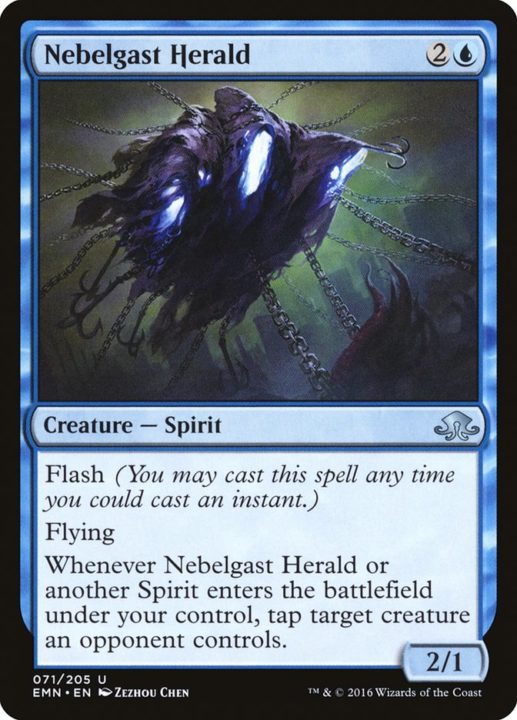
Nebelgast Herald often plays second fiddle to Spell Queller, but they work very well in tandem. “The other three-mana Spirit with flash” gives you something to do on the turns when your opponent plays around Spell Queller, and its ability to tap creatures will allow you to keep games under control so your Spell Quellers can counter the spells that really matter. I’ve won several games because I was able to tap a Niv-Mizzet Reborn or a Spawn of Mayhem to sneak through damage. This little-known uncommon deserves much more praise than it gets.
The Protectors
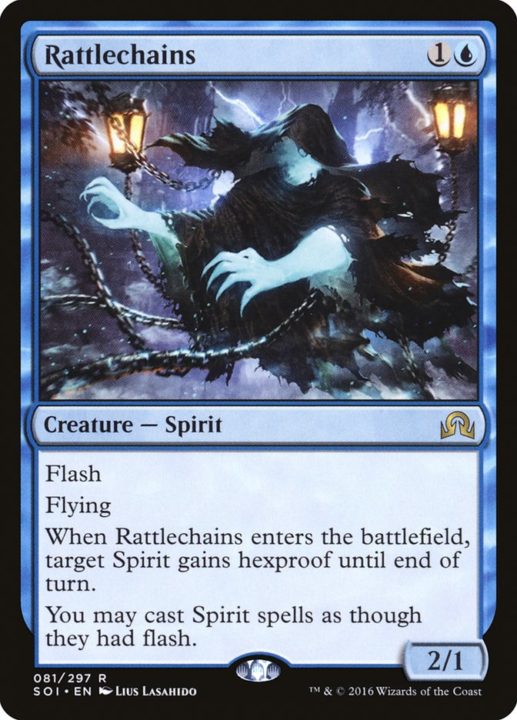
Spell Queller and Nebelgast Herald are likely to draw plenty of ire from your opponents, so you’ll need ways to protect them. Fortunately, Spirits has two two-mana creatures that can protect your board: Rattlechains and Selfless Spirit. Rattlechains can shield a single creature from a removal spell, plus it gives all your Spirits flash, which makes Nebelgast Herald happy. Selfless Spirit protects against board-wipes, which is huge for a deck that often relies on going wide.
Brazen Borrower
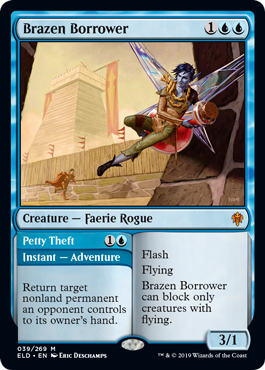
The final creature in this creature-dense deck is honorary Spirit and multi-format all-star Brazen Borrower. A 3/1 flyer with flash is always good to have, but its adventure is often much more useful. Petty Theft can help you stay ahead on tempo, clear the way for a lethal attack, or break up two-card combos like Heliod/Walking Ballista.
Collected Company
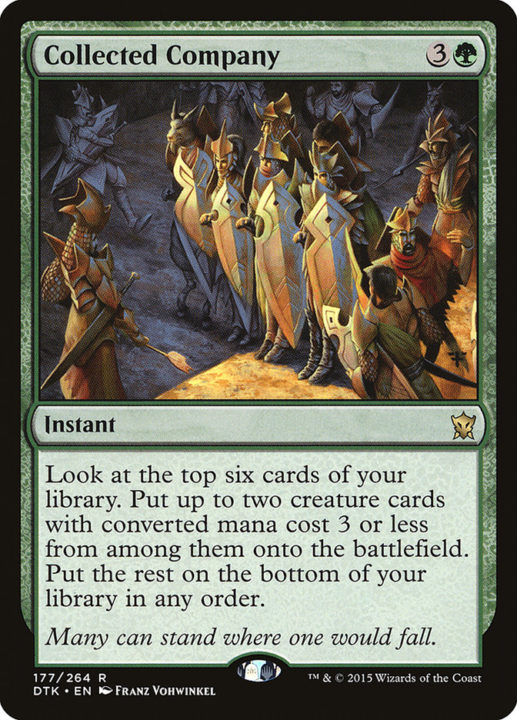
An increasing number of Spirits players are opting to splash green for Collected Company. Though they sacrifice some manabase consistency, CoCo allows Spirits decks to dig deeper into their libraries and deploy more threats more efficiently. As anyone who’s cast this spell can tell you, the ability to put two creatures into play for just four mana – especially two evasive, disruptive creatures – will often put you ahead of the game.
Sample Decklist
Bant Spirits, by Kenta Harane – 1st Place at Players Tour Nagoya
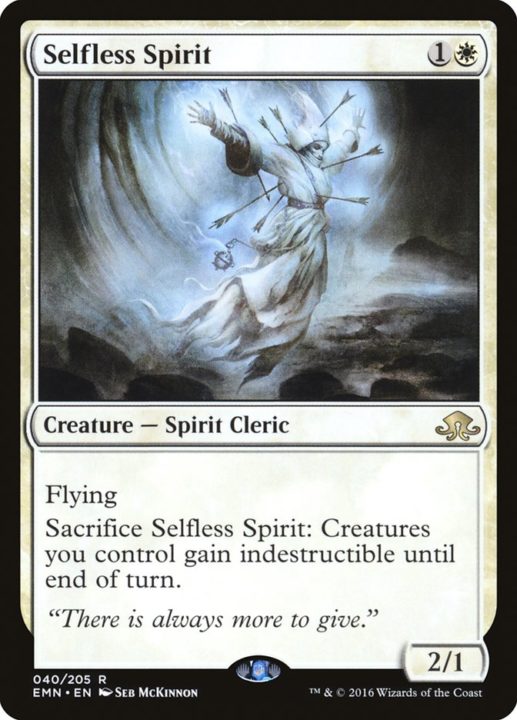
2 Brazen Borrower
4 Empyrean Eagle
4 Mausoleum Wanderer
4 Nebelgast Herald
4 Rattlechains
4 Selfless Spirit
2 Spectral Sailor
4 Spell Queller
4 Supreme Phantom
4 Collected Company
2 Island
2 Plains
4 Botanical Sanctum
4 Breeding Pool
4 Glacial Fortress
4 Hallowed Fountain
4 Temple Garden
Sideboard:
1 Archangel Avacyn
4 Deputy of Detention
1 Disdainful Stroke
4 Mystical Dispute
2 Permeating Mass
2 Rest in Peace
1 Settle the Wreckage
Spirits in the Metagame
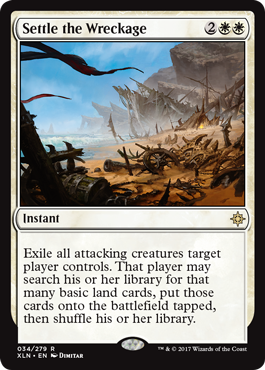
The main draw to playing Spirits is its favorable match-up against Dimir Inverter. Combo-control decks like Inverter need time to assemble the right combination of combo pieces and protection, and Spirits is adept at both applying pressure and countering their key cards. Inverter’s removal and disruption spells are all one-to-one, and Spirits typically does a good job at swarming the board with flying threats.
Spirits thrives against other slow, controlling decks in Pioneer, such as UW. Your opponent will often be on the “Supreme Verdict or bust” plan, and you can easily invalidate that card with Selfless Spirit or Spell Queller. Just be wary of Teferi, Time Raveler, which can shut down your game plan.
But when it comes to facing down aggressive decks, Spirits can lose its footing. The deck can usually race Mono-Black Aggro, but tends to fall short against the efficient Mono-Red or the hard-hitting Mono-Green. White-based aggro decks with the Heliod/Walking Ballista combo can also force Spirits into a reactive stance and overtax your interactive spells.
While Spirits’ main deck doesn’t have much flexibility, most players dedicate ample sideboard space to shoring up these aggressive match-ups. Settle the Wreckage is common in both Blue-White and Bant lists, and some players opt for cheaper removal spells like Seal Away. Most CoCo versions of the deck also run Deputy of Detention and Permeating Mass for additional creature interaction.
Whether you’re competing in Phoenix this weekend or heading down to your local game store, Spirits is perfect for anyone looking to play a disruptive aggro strategy. If you end up picking up this deck, let us know on Twitter at @Card_Kingdom, and stay tuned for more Pioneer deck guides!

Hallie served as Content Manager for CardKingdom.com and editor-in-chief of the Card Kingdom Blog from 2017-2022. Part tournament grinder, part content creator, Hallie is always looking for ways to improve her game and to share what she learns with others.

